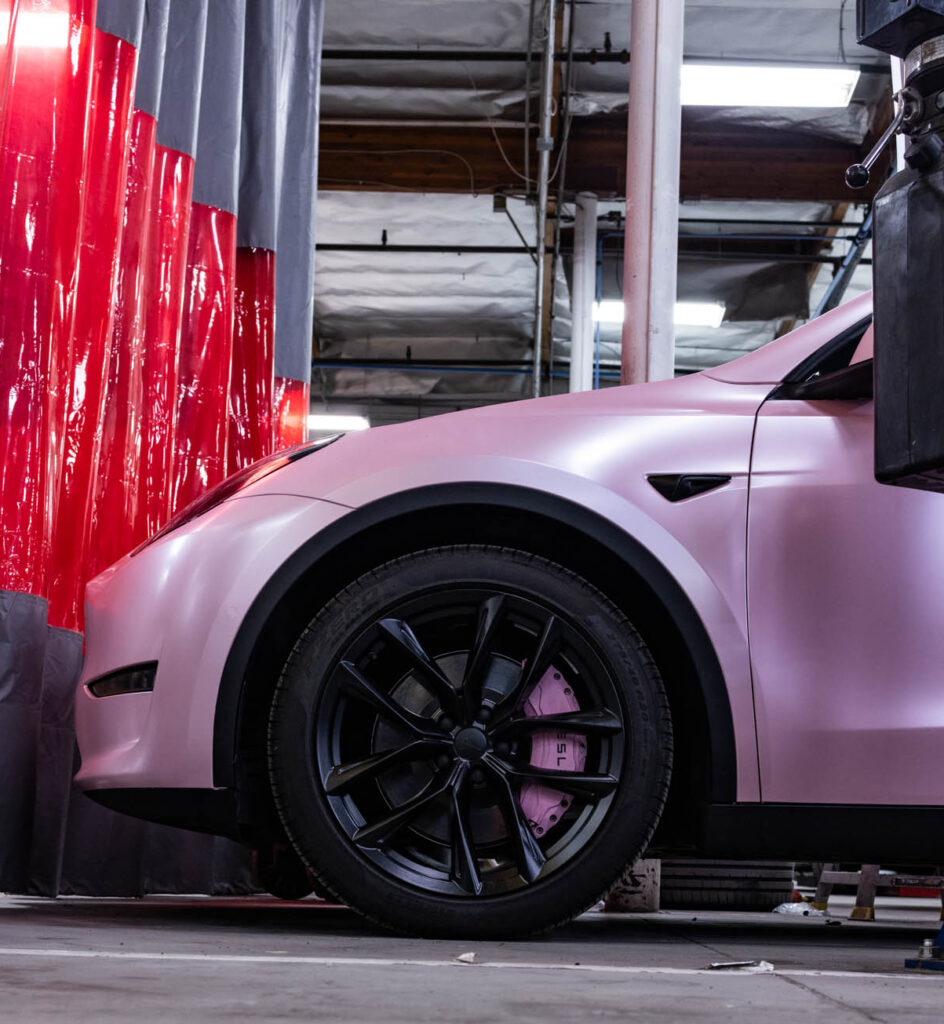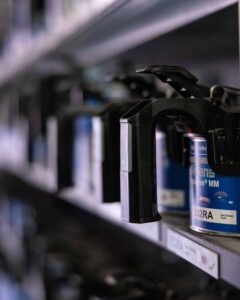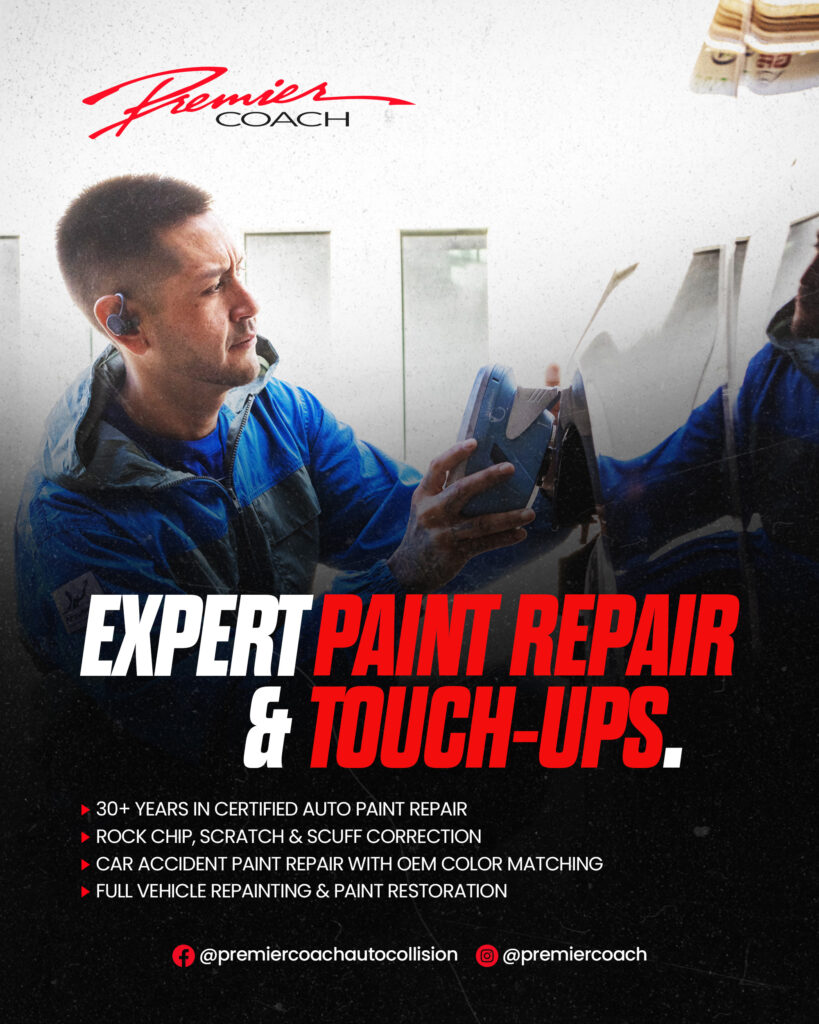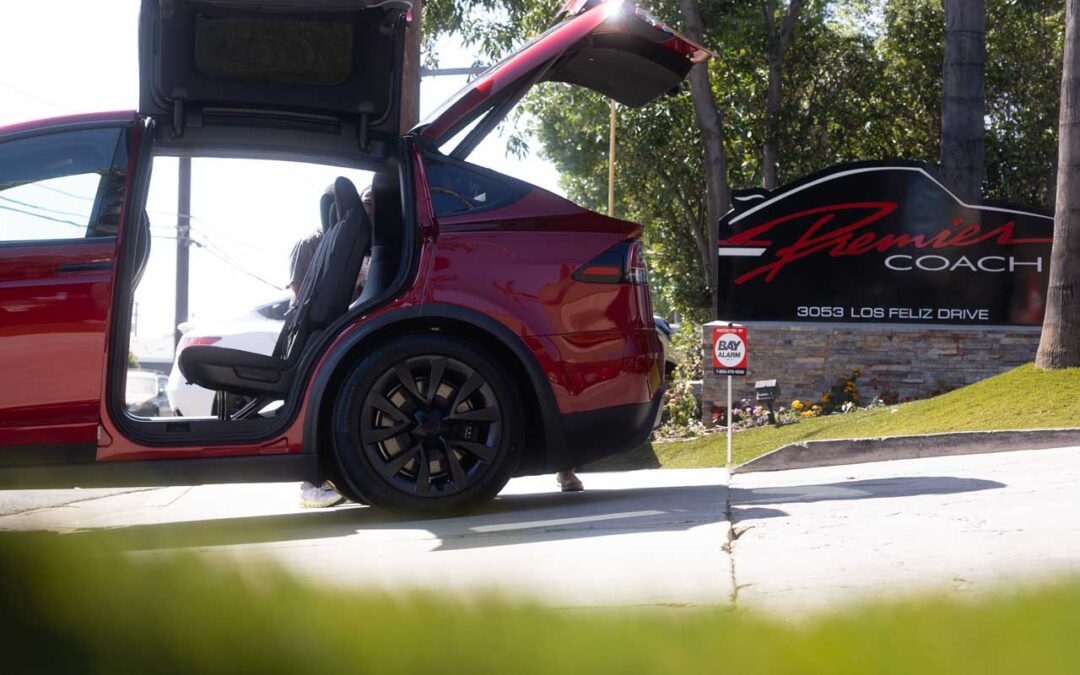Tesla Body and Collision Paint Repairs require more than cosmetic fixes. A collision impacts more than your car’s appearance. After an accident, Tesla owners face an important decision: where to repair their vehicle.
Unlike traditional cars, Teslas are advanced electric vehicles. They use aluminum bodies, complex battery systems, and ADAS-based safety features. As a result, repairs demand factory tools, specialized training, and OEM-approved procedures.
Therefore, when it comes to Tesla Body and Collision Paint work, cutting corners is never an option. An uncertified shop can put your safety and investment at risk. To protect performance and resale value, every repair must follow Tesla certification standards.
This blog explains why Tesla owners should only trust certified collision centers after an accident. We will highlight the importance of OEM procedures, the role of Tesla certification, and the safety risks that come with improper repairs.
For drivers in California, this is especially important. The state leads the nation in EV adoption. More than 1.77 million plug-in cars are registered here, making up almost one-third of the U.S. total. Even with a recent 21% drop in Tesla registrations in Q2 2025, California still has the country’s largest Tesla base. The Model 3 and Model Y remain the most popular EVs statewide.
The Importance of Tesla Certification for Body and Collision Paint

Tesla certification is more than a badge; it is proof of quality.
-
OEM-approved paint systems: Certified centers use Tesla’s exact waterborne paint formulas and refinishing protocols, ensuring color accuracy and durability.
-
Controlled spray booth environments: As a result, refinishing is flawless and free from contamination.
-
Genuine Tesla parts and coatings access: In addition, certification guarantees direct access to OEM panels, adhesives, and paint.
-
Trained technicians: Most importantly, technicians follow Tesla’s strict repair and safety guidelines.
In short, when searching for Tesla Body and Collision Paint, certification matters—don’t compromise.
Repair Costs, Complexity & Safety Behind the Paint
EV Repairs Are More Complex—and Costly
According to CCC Intelligent Solutions’ Q1 2025 Crash Course report, EVs require nearly four additional labor hours per repair versus ICE vehicles, with labor costs averaging 30% higher. EVs also use fewer but more expensive parts—EV repairs replaced 22 parts on average in 2024 compared to 16 for ICE cars. (CCC Intelligent Solutions, Repairer Driven News).
Rising Repair Costs Industry-Wide
-
The average total cost of repair (TCOR) ended 2024 at $4,730, a 3.7% year-over-year increase—though the rate of growth is slowing (CCC Intelligent Solutions.).
-
Through Q1 2025, repair costs rose another 1.1%.
-
Over 63% of collision repairs require supplemental claims, with average gaps between insurer estimates and final repair costs ranging from $1,200–$1,800.
Tesla-Specific Repair Cost Ranges
| Repair Type | Estimated Cost Range |
|---|---|
| Front Bumper Replacement | $2,000 – $5,000 |
| Rear Bumper Replacement | $1,500 – $4,500 |
| Tesla Paint Repair | $800 – $3,500 |
| Tesla Dent Repair | $500 – $2,500 |
| Autopilot Sensor Calibration | $500 – $2,000 |
| Side Panel Replacement | $1,500 – $6,000 |
Safety Considerations Beyond Just Paint

Tesla Body and Collision Paint isn’t merely cosmetic—it directly affects performance and safety.
-
Structural integrity: For example, aluminum panels must be refinished correctly to maintain crash protection.
-
ADAS accuracy: Moreover, paint thickness and refinishing placement can interfere with cameras, radar, and sensor alignment.
-
Battery and thermal systems: Finally, improper finishes may disrupt heat dissipation and battery performance.
Consequently, only certified centers can guarantee Tesla’s OEM procedures are followed.
OEM Procedures: No Shortcuts Allowed
Tesla requires certified repair centers to adhere to:
-
OEM aluminum panel repair and replacement methods
-
Tesla-approved adhesives, welds, and bonding techniques
-
Strict waterborne paint refinishing processes
-
Post-repair ADAS recalibration, restoring autopilot, lane assist, and collision avoidance systems
Ultimately, skipping these steps jeopardizes safety, performance, and warranty compliance.
Premier Coach: Your Certified Tesla Repair Partner

Here’s why Tesla owners in Thousand Oaks and Camarillo choose Premier Coach:
-
Tesla Certified Collision Centers for OEM-quality body and collision paint repairs
-
Genuine Tesla paint systems, delivering flawless, factory-matched refinishing
-
Tesla-trained technicians for structural, electrical, and cosmetic work
-
Comprehensive ADAS calibration ensuring restored safety and autonomous features
-
Lifetime warranty on all repairs—cosmetic and safety-related
In addition, our mission is to restore both your Tesla’s performance and your peace of mind.
Realistic Cost & Value Insights
-
Industry avg repair costs: $4,730 (2024), rising modestly into 2025
-
EV repairs are 30% more labor-intensive than ICE vehicles
-
Tesla-specific repairs often fall in ranges like $800–$5,000 depending on components
-
Additionally, over 63% of repairs involve supplemental claims—adding $1,200–$1,800 on average
Conclusion & Call to Action
Tesla Body and Collision Paint Repairs demand certified expertise, OEM-approved systems, and safety-driven precision. Therefore, cutting corners may save a few dollars today—but uncertified repairs risk your Tesla’s safety, performance, and long-term value.
Choose Premier Coach—a Tesla Certified Collision Center—for expert body and collision paint repair, OEM parts, certified procedures, and safety you can rely on.
Start your online estimate today and experience the Premier Coach difference.

